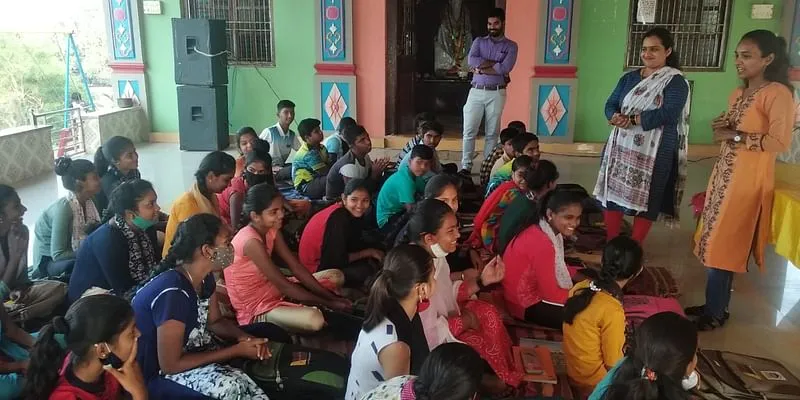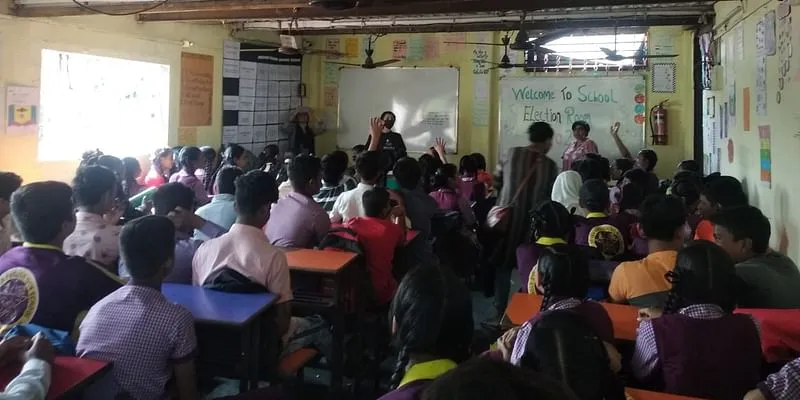Bharat Edtech Initiative aims to bridge learning divide for economically underprivileged children
Bharat Edtech Initiative, a collaboration of 36 partner organisations across philanthropy, social impact, edtech, finance, and monitoring and evaluation, aims to make education accessible to all.
The School Children's Online and Offline Learning (SCHOOL) survey, August 2021, says that only eight percent students from rural India have been studying online ‘regularly’ and about 92 percent of children have lost at least one language ability from the previous year across classes.
The reasons for this extend beyond device access to consistent access to digital learning, among others. Bridging this digital divide calls for a holistic approach; one that goes beyond providing access.
Launched in 2021, is a collaboration of 36 partner organisations, who have come together and adopted a multi-pronged approach to ensure that digital learning leads to improved learning outcomes for students, consistently.

This nationwide initiative is steered by four organisations that offer strategic guidance on the overall management and execution of the Initiative. Sattva Consulting is the lead anchor of the initiative. The Michael & Susan Dell Foundation and British Asian Trust are lead donors, while GiveIndia supports donor relationships and fund management.
Through personalised and adaptive edtech solutions, the initiative ensures that students continue to learn, no matter the external situations. Currently it claims to have boarded 117,000 students from underprivileged families on its edtech platform as part of their mission to bridge the learning loss.
Through effective, equitable access to edtech, the initiative is supporting students with the necessary tools to bridge the learning losses of the last two years as they go back to school in April 2022. These results have been achieved across ten states within the five months of initiating on-ground efforts.
Students have the flexibility to learn anytime and anywhere in one of the nine language choices offered by the initiative.
It is working in collaboration with the partner organisations across various industries, such as philanthropy, social impact, edtech, finance, and analytics. These organisations support the Bharat edtech Initiative in several capacities and categories, such as fundraising, educational technologies, nonprofit organisations, monitoring and evaluation, financial management, marketing communications, and program management.
Digital divide
The COVID-19 pandemic has widened the already-existing digital gap between students.
“There is one section of children who are able to complement their school based learning through technology v/s kids who have no ability or access to quality edtech products. This is what we are trying to achieve through Bharat edtech,” Rathish Balakrishnan, Co-Founder & Managing Partner, Sattva Consulting (a programme design and management partner of Bharat Edtech Initiative).
BEI is focusing on bridging the learning losses for students aged 9-17 (Grade 1-12) from low-income households with monthly incomes up to Rs 25,000. Through various initiatives like the HardWare Pilot that provides dedicated learning devices to students, BEI is ensuring students have the tools to improve learning levels.
It identifies students from the financially backward communities, assists them or offers them edtech products to help them learn, and works with teachers, parents and other stakeholders to monitor their usage and further measure the feedback.
“Our efforts towards improving learning outcomes for students in India have made significant progress over the last couple of months. Through proven edtech solutions, we aim to continue working towards bridging the digital learning divide and unlock the potential of every student,” Rathish tells SocialStory.
Enabling continuous learning
By 2025, BEI aspires to enable digital access to one million, first-generation digital learners in India and demonstrate improved learning outcomes. BEI’s objective is to complement classroom teaching with at-home learning, making it a permanent feature of education among the economically underprivileged.

“As schools reopen, we are seeing children that have suffered with high learning loss. Most of these children just being in the classroom will not be able to solve the loss they had. It will go only slower. Complimentary learning/ subject align curriculum at home for what they are learning in school is what we are looking to implement to student’s life. Complimenting rather than substituting,” says Rathish.
Under this mission, BEI aims to establish a daily learning habit for children through edtech products- supported by a concerned adult. This if done consistently among different communities will churn out large edtech outcomes and learning, it believes.
Edited by Affirunisa Kankudti


![[Survivor series] Students in my village struggled without online facilities in the early pandemic days, but did not give up](https://images.yourstory.com/cs/5/79900dd0d91311e8a16045a90309d734/survi-1648472361309.jpg?fm=png&auto=format&h=100&w=100&crop=entropy&fit=crop)





